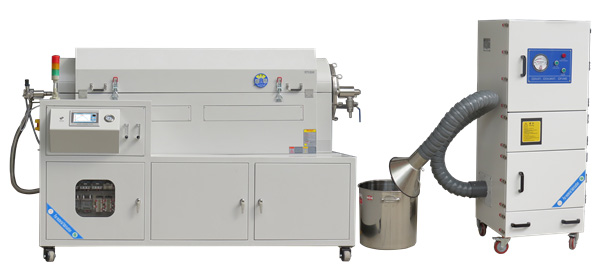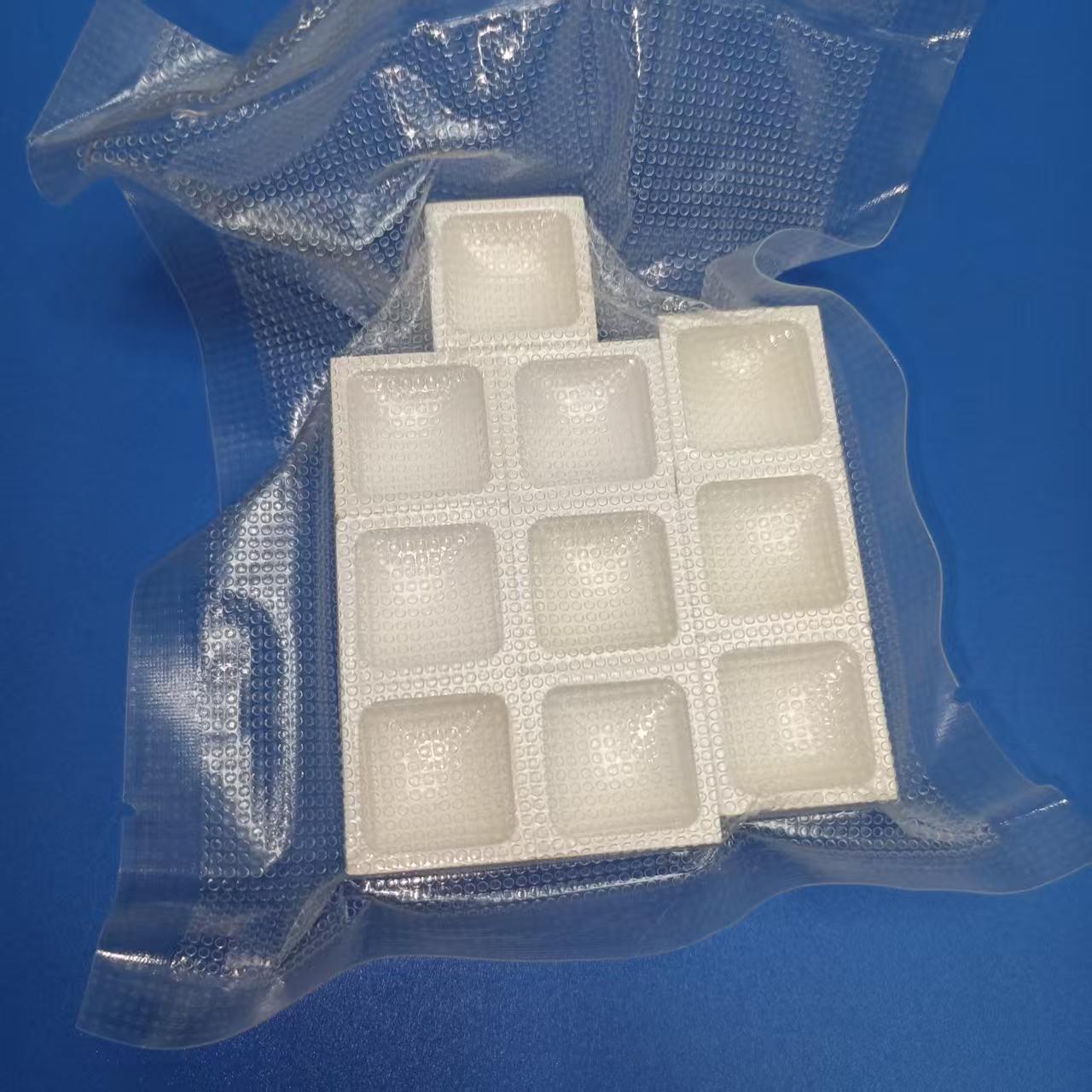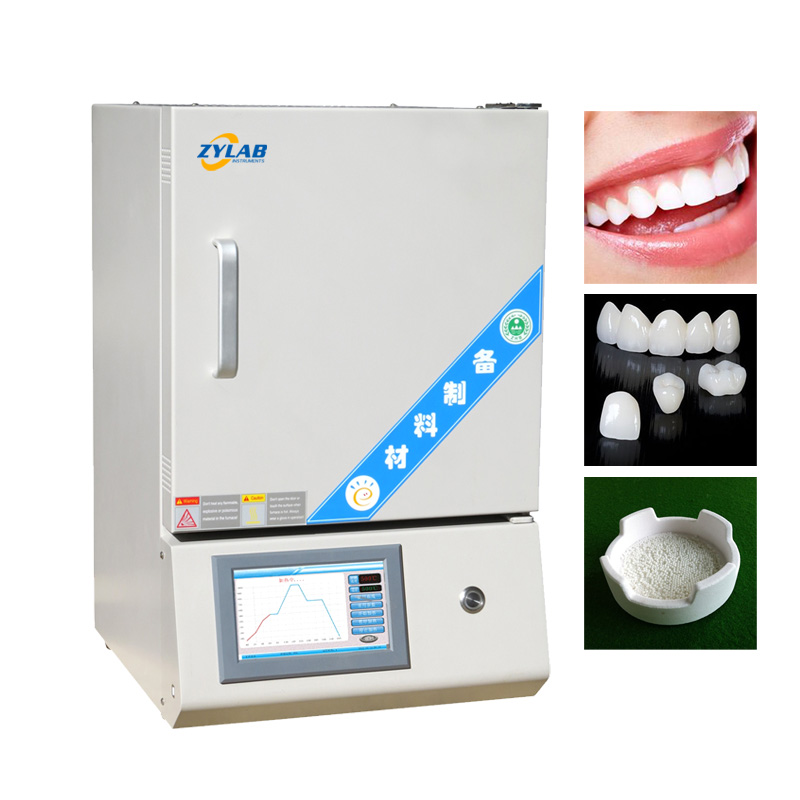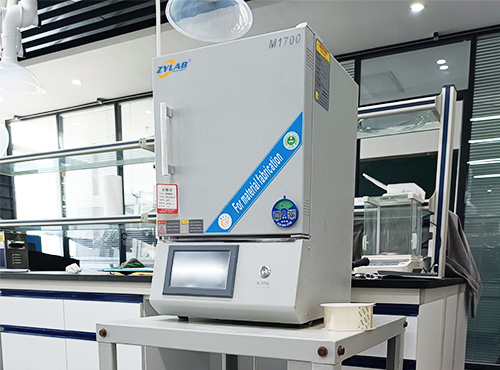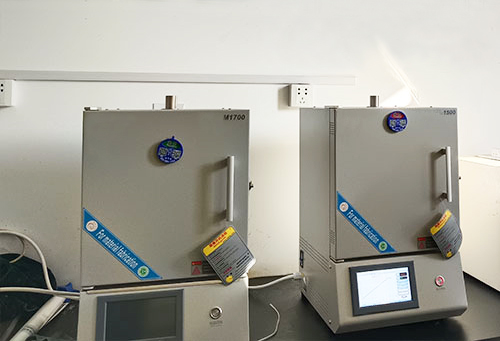Table of Contents
What is a Calcination Furnace?
A calcination furnace is a specialized industrial device used for the calcination process, primarily designed to thermally treat materials at high temperatures to induce physical or chemical changes.
Calcination refers to heating solid materials at elevated temperatures, typically in an air or inert gas atmosphere, to remove volatile substances, decompose compounds, or alter the structure and properties of the material.
Classification
Calcination furnaces can be classified into several types based on structural design and application areas:
1. Rotary Calcination Furnace
- Structural Features:
- The furnace body is a long cylindrical shape, placed horizontally and capable of slow rotation.
- Usually designed with an inclined angle to allow materials to move forward automatically under gravity.
- Applications:
- Large-scale continuous calcination, such as cement clinker production, limestone decomposition, and metal oxide preparation.
- Advantages:
- Capable of handling powders, granules, or bulk materials.
- Adaptable to various atmospheres (oxidizing, reducing, or inert).
2. Fluidized Bed Calcination Furnace
- Structural Features:
- Materials are fluidized under the action of airflow, ensuring full contact with hot gas streams.
- Equipped with gas inlet and outlet control systems.
- Applications:
- Efficient calcination of powder materials, such as catalysts, lithium battery materials, and chemical precursors.
- Advantages:
- High thermal conductivity and uniform temperature, ideal for fine materials.
- Requires specific particle sizes (generally between 20–500μm).
3. Box Calcination Furnace (Box Furnace / Muffle Furnace)
- Structural Features:
- Box-shaped furnace chamber, allowing placement of crucibles, sample trays, etc.
- Features good sealing performance, suitable for atmosphere control.
- Applications:
- Laboratory or small-scale calcination, such as ceramics, oxide materials, and glass samples.
- Advantages:
- Precise temperature control, suitable for laboratories and small-scale production.
4. Tube Calcination Furnace
- Structural Features:
- The furnace chamber is a long tubular structure, which can be installed horizontally, vertically, or at an incline.
- Often equipped with atmosphere protection (e.g., inert gases or vacuum environment).
- Applications:
- Laboratory research or high-temperature processes, such as material pyrolysis, crystal growth, and powder processing.
- Advantages:
- Suitable for gas-solid reactions and uniform material heating with precise atmosphere control.
Features
-
High-Temperature Capability
- Operating temperature range typically between 600°C and 1600°C, meeting various material and process requirements.
-
Precise Temperature Control
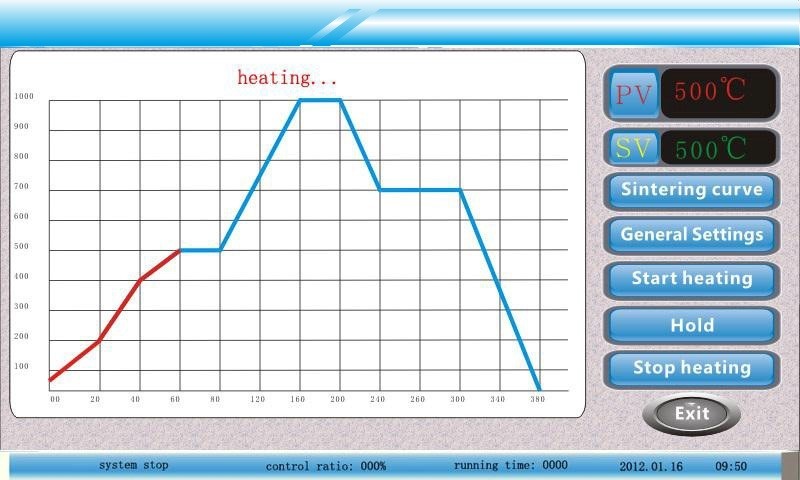
- Equipped with an intelligent temperature control system, supporting programmable heating and cooling processes.
-
Atmosphere Control
- Supports multiple operational atmospheres, including:
- Oxidizing Atmosphere: Suitable for calcination of metal oxides.
- Inert Atmosphere: Using nitrogen or argon to prevent material oxidation.
- Reducing Atmosphere: Commonly used for metal powders or reduction processes.
- Vacuum Environment: Prevents loss of volatile components or oxidation reactions.
- Supports multiple operational atmospheres, including:
-
Versatile Material Handling
- Capable of processing a wide range of materials, including metals, ceramics, ores, and catalysts.
-
Flexible Operation Modes
- Batch Operation: Ideal for laboratory research or sample preparation.
- Continuous Operation: Suitable for pilot-scale or industrial production, featuring efficient material transport systems.
Functions
-
Dehydration and Removal of Volatile Components
- Removes moisture (e.g., free water and crystalline water) and organic volatiles to enhance material purity.
- Commonly used for pre-treatment of ceramic raw materials, minerals, and catalyst carriers.
-
Facilitating Chemical Reactions
- Promotes specific chemical reactions under high-temperature conditions, such as:
- Oxidation Reactions: For producing metal oxides.
- Reduction Reactions: Reducing oxides to metals in a reducing atmosphere.
- Thermal Decomposition Reactions: Decomposing carbonates, nitrates, and other compounds to form oxides or other products.
- Promotes specific chemical reactions under high-temperature conditions, such as:
-
Phase and Crystal Structure Transformation
- Provides stable high-temperature conditions to facilitate crystal structure reorganization or phase transformation, such as:
- Optimizing crystal phases of ceramic materials to enhance mechanical properties.
- Stabilizing active phases in catalyst carrier materials.
- Provides stable high-temperature conditions to facilitate crystal structure reorganization or phase transformation, such as:
-
Particle Size and Morphology Control
- Adjusts particle size and morphology during calcination, improving material dispersion and uniformity.
- Widely used in the preparation of lithium battery electrode materials and oxide powders.
-
Material Densification and Pre-Sintering Treatment
- Serves as a pre-sintering step to remove impurities or optimize material properties, providing high-quality precursors for sintering.
-
Thermal Stability Testing
- Provides a stable high-temperature environment to test materials for thermal stability, decomposition characteristics, or phase transitions.
- Used in R&D, quality control, and material performance evaluation.
-
Pre-Baking and Surface Modification
- Conducts pre-baking at lower temperatures (partial sintering) to improve mechanical properties or surface chemical characteristics.
- Surface modification enhances catalytic activity, adsorption performance, or corrosion resistance.
-
Catalyst Activation
- Activates surface active sites of catalysts by removing surface impurities or enhancing their activity through calcination.
-
Raw Material Processing in Industrial Production
- Extensively used for high-temperature treatment of raw materials in industrial production, such as:
- Ceramic Industry: Pre-treatment of ceramic powders and precursors.
- Metallurgical Industry: Pre-reduction or oxidation of ores.
- Chemical Industry: Thermal decomposition of chemical precursor materials.
- Extensively used for high-temperature treatment of raw materials in industrial production, such as:
-
Waste and Byproduct Treatment
- Used for the harmless disposal of industrial waste, such as pyrolysis to remove harmful components or oxidation to stabilize unstable chemical substances.
Applications
Calcination furnaces are widely used in industrial production and scientific research, spanning multiple fields. Their primary applications include:
-
Ceramics and Refractory Materials
- Dehydration and impurity removal from ceramic raw materials.
- Preparation of high-performance ceramic powders, such as alumina and zirconia.
- Firing ceramic bodies to promote densification and phase transformation.
-
Lithium Battery Materials
- Calcination of cathode materials (e.g., lithium cobalt oxide, lithium nickel cobalt manganese oxide).
- Heat treatment of anode materials (e.g., graphite, silicon-based materials).
- Synthesis and phase transformation of electrolyte materials.
-
Chemical Industry
- Thermal decomposition reactions, such as converting calcium carbonate to calcium oxide.
- Preparation and activation of chemical catalysts.
- Thermal decomposition of chemical precursors to produce oxides.
-
Metallurgical Industry
- Dehydration and oxidation treatment of ores (e.g., reducing hematite to magnetite).
- High-temperature reduction reactions of metal oxides with reducing agents.
- Pre-sintering at high temperatures to improve metal material purity.
-
Powder Material Preparation
- Production of uniformly dispersed ultrafine powder materials.
- Improving powder particle morphology and size distribution.
- Promoting uniform diffusion of elements within powders.
-
Catalyst Industry
- Calcination of catalyst carriers to enhance mechanical strength.
- Removal of surface impurities from catalysts.
- Formation or stabilization of active phases.
-
Food and Pharmaceutical Industry
- High-temperature dehydration and purification of pharmaceutical raw materials.
- Calcination synthesis of food additives (e.g., phosphates).
- Preparation of pharmaceutical catalysts or carrier materials.
-
Laboratory and Research
- Small-scale sample preparation (e.g., nanomaterials).
- Material property studies (e.g., thermal expansion coefficient, phase analysis).
- Development of new processes or evaluation of high-temperature performance.
ZYLAB Calcination Furnace Recommendations
For more high-temperature furnaces, click here!
Learn more details or have custom requirements? Contact us now! We offer free quotes for all products!
Considerations for Purchasing a Calcination Furnace
To ensure the furnace meets practical application needs and minimizes operational and maintenance costs, consider the following key points during the procurement process:
-
Temperature Range
Choose a furnace capable of reaching and maintaining the required temperature range, such as a working temperature below 1200°C or a maximum temperature up to 1700°C. -
Size Selection
Select equipment based on production capacity, such as a small box-type calcination furnace or a high-efficiency rotary furnace. -
Atmosphere Control
Determine whether vacuum conditions, inert gas protection (e.g., nitrogen, argon), or oxidizing atmosphere conditions are needed. -
Control System
Check if the furnace is equipped with an advanced PLC system that supports programmable temperature curves, real-time data monitoring, and fault alarms. -
Heating Rate
Laboratory calcination furnaces typically require a heating rate of 10–30°C/min, while industrial furnaces should have a heating rate designed according to process requirements. -
Energy Efficiency and Insulation
Opt for equipment with excellent insulation performance to reduce long-term operational costs. -
Maintenance and Support
Consider the availability of spare parts, technical support, and after-sales service for the furnace. -
Cost Budget
Evaluate the cost of the furnace based on its features, quality, and performance. Striking a balance between cost and specific application requirements is crucial.
Benefits of Purchasing Calcination Furnaces from China
Sourcing calcination furnaces from China offers various opportunities for businesses. Renowned for its manufacturing capabilities and cost-efficient production, China is an attractive choice for companies seeking competitive pricing on calcination equipment.
-
Cost Savings
With lower labor and production costs, Chinese manufacturers often offer more affordable prices compared to manufacturers from other countries. This is particularly advantageous for businesses with tight budgets or those aiming to maximize profit margins. -
Advanced Technology
China’s manufacturing industry is highly developed, capable of producing high-quality calcination furnaces that meet international standards and specifications. This ensures reliable and efficient equipment for business operations. -
Versatile Customization Capabilities
Chinese manufacturers provide personalized solutions tailored to specific requirements, including furnace chamber sizes, temperature ranges, atmosphere control systems, and automation programs. This flexibility caters to both laboratory-scale and industrial-scale applications. -
Efficient Supply Chain
With strong supply chain integration, Chinese manufacturers offer short production cycles and quick responses to customer needs. Related accessories and spare parts are also readily available and reasonably priced. -
After-Sales Support
Many Chinese manufacturers provide multilingual after-sales services, including remote technical assistance and guidance, ensuring smooth operations for international buyers.
How to Source Calcination Furnaces from China
-
Determine Requirements
- Define Technical Specifications: Specify furnace chamber size, maximum temperature, heating rate, and required atmosphere (air, inert gas, vacuum, etc.).
- Identify Application Fields: Select the appropriate type of calcination furnace (box furnace, tube furnace, rotary furnace, etc.) based on its intended use (e.g., ceramics, lithium battery materials, chemical catalysts).
-
Find Suppliers
Locate suppliers offering high-quality products through international trade fairs or online searches. -
Evaluate Suppliers
Assess suppliers’ quality management certifications, export experience, and reputation. ZYLAB is committed to providing high-quality products and exceptional customer service. Since 2008, with over a decade of expertise in the field, we are your trusted partner for solutions in heat treatment, materials science, and powder metallurgy. -
Sign Contracts
- Confirm Technical Specifications: Clearly outline the equipment’s specifications, materials, and configurations in the contract.
- Specify Pricing and Terms: Include equipment cost, shipping fees, insurance, taxes, and ensure transparent pricing.
- Set Delivery Timeline: Agree on the production schedule and delivery timeframe.
-
Monitor Production
Request regular updates on production progress from the manufacturer. -
Shipping and Customs Clearance
Use suitable shipping methods such as air or sea freight, and prepare all necessary customs clearance documents. It is recommended to work with experienced logistics companies for transportation and customs assistance. -
After-Sales Service
Ensure the manufacturer offers remote guidance and can promptly provide spare parts and ongoing support.
FAQs About Calcination Furnaces
-
What is the maximum temperature of a calcination furnace?
Common calcination furnaces operate within a temperature range of 600°C to 1600°C, with a maximum temperature reaching up to 1700°C. -
Can calcination be performed under vacuum or a specific atmosphere?
Yes, calcination furnaces with atmosphere control systems are available. Common options include vacuum environments, inert gas protection, and oxidizing atmospheres. -
How uniform is the temperature in the calcination furnace?
Our calcination furnaces typically offer temperature uniformity of around ±1°C, depending on the chamber size and design. -
How long does it take for the calcination furnace to reach the set temperature?
Laboratory calcination furnaces usually take 20–60 minutes. For special requirements regarding heating rates, furnaces with higher power can be selected. -
How is operational safety ensured in calcination furnaces?
Modern calcination furnaces are equipped with safety features such as over-temperature protection, power failure recovery, and exhaust gas systems. -
How can I maintain and extend the service life of a calcination furnace?
Regularly clean residues and contaminants inside the chamber and promptly replace aging components such as silicon carbide or molybdenum disilicide rods. -
Can calcination furnaces be customized?
Yes, customization options include chamber size, heating element type, atmosphere control systems, heating rates, and exhaust treatment devices. -
What is the typical warranty period for calcination furnaces?
The standard warranty period is 1–2 years. Consumable parts (e.g., heating elements and thermocouples) may have shorter warranty periods, so it’s advisable to confirm this with the manufacturer in advance. -
What should I consider when importing a calcination furnace from China?
Choose suppliers offering high-quality products with export experience, sign clear contracts, and ensure the transport and customs clearance processes are well-managed for secure delivery.
If you have more specific questions about calcination furnaces, please contact us immediately. Our technical team will provide you with professional answers and customized solutions as quickly as possible.
Share this entry
You might also like

